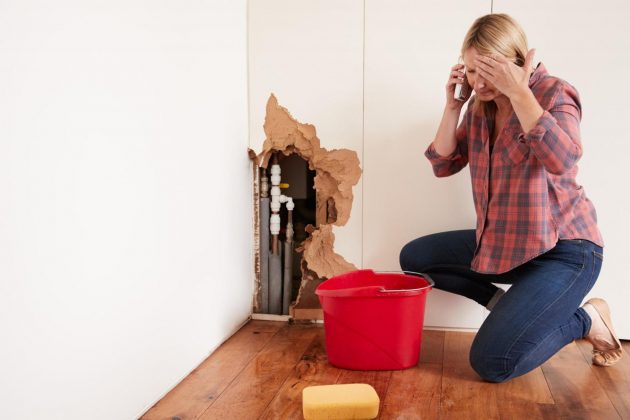When it comes to water damage, not every incident falls under the same category. Depending on the severity of the damage and the kind of water that’s involved, different steps may be taken by restoration services. For instance, an appliance leak doesn’t fall in the same category as floodwaters from a storm.
To see which kind of water damage you may be dealing with, check out the three main water categories evaluated by professionals.
1. Clean Water
If you’re dealing with a Category 1 water damage, or clean water damage, you’re in luck; this poses no threat to human health. The water causing the problem comes from a sanitary source and will not harm your skin or cause illness. This might be the case when dealing with an overflowing bathtub or a broken water supply line.
2. Gray Water
Water in Category 2, also known as gray water, contains a significant amount of contamination and could potentially cause harm to humans. The chemical or physical contaminants can cause illness or discomfort. Typically, gray water incidents occur when toilets, sump pumps, or dishwashers fail.
3. Black Water
When dealing with Category 3’s black water, homeowners should steer clear of the contaminated water at all costs. It may contain pathogenic or toxigenic agents that can cause serious harm, like pesticides, heavy metals, or organic matter. Typically, water from the toilet trap, a sewer backup, or flood waters from a natural disaster are considered to be black water.
There are also three different classes of water damage. These classes have less to do with the kind of water present and more to do with the amount of water.
Class 1: This is a little amount of water with low levels of absorption or evaporation. If the water damage is only present in part of a room and there is little carpet affected, then it is usually labeled as Class 1.
Class 2: There is more water than with a Class 1 incident, and it affects at least one entire room. Moisture has invaded structural materials, and water has wicked up the walls, but not more than 24 inches.
Class 3: This class has the fastest rate of absorption. The water is often coming from overhead, and it affects everything in the room, from the walls to the floor.
Class 4: In a Class 4 incident, saturation is extensive. Materials with low porosity (hardwood floors, concrete, plaster, etc.) are affected and require very specific kinds of drying. Low humidity is used to remove the moisture as quickly as possible.
No matter what category or class of water damage you’re dealing with, Hawaii Restoration Services is ready to help repair your property today. We’re the leading name in water damage restoration serving Kapolei and the entire island of Oahu, and we know how to handle everything from small leaks to extensive flooding.
To schedule an emergency restoration project with our highly trained professionals, call (808) 468-7978 today.
